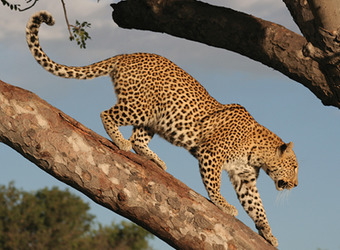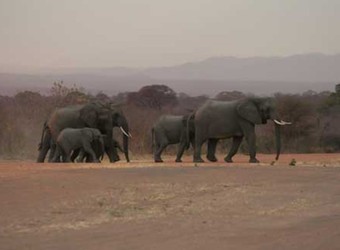Ruaha Nat'l Park
Click here to be the first to review Ruaha Nat'l Park
Start Planning Your Custom Safari view larger image
view larger image
Ruaha may be the most dramatic national park in Tanzania for its combination of spectacular vistas and variety of animals, including 400 bird species. The great Ruaha River is the lifeline supporting vast concentrations of buffalo, gazelle, kudu, roan and sable antelope, and thousands of elephant. The river harbors plentiful hippo and crocodile. Predators include lion, leopard, cheetah and African wild dog. Rarely, however, does one meet other vehicles on game drives in this little-explored landscape.
 view image gallery
view image gallery
The Safari Experience
Ruaha is Tanzania’s largest national park, and with its remote location, it sees few tourists, providing a very exclusive safari experience. Like other parks in western and southern Tanzania, Ruaha is part of a large ecosystem including the Rungwa Game Reserve and a number of other protected wildlife areas, with little human impact and a very rich wildlife population amidst raw wilderness. The Great Ruaha River provides a constant water source for wildlife and only dries up in years with extremely low rainfall. The main safari focus is morning and afternoon wildlife drives by open 4x4 vehicles, as well as nature and wildlife walks with rangers and trackers, bird watching with a knowledgeable guide, and romantic meals in the wilderness set up and served by your guides. The scenery stuns with rolling hills and kopjes, bubbling natural springs and a rift escarpment rising up more than 300 feet above a broad valley below.
 view image gallery
view image gallery
Wildlife
Ruaha has very large herds of elephant and buffalo, and plenty of space to support them. About 8,000 elephant roam free here, compared to just over 2,000 in the Serengeti, for example. Endangered wild dog are resident here, along with lion, leopard, cheetah, jackal, bat-eared fox and all of Africa’s key plains wildlife, including giraffe, zebra, eland, impala and much more. Some of the more unique species found in Ruaha include the greater kudu (the males with their impressive horns being most prevalent in the June breeding season) as well as sable and roan antelope, found in the Miombo woodland. The area teems with bird life; 571 recorded species include migrant birds from as far away as Europe, Asia, Madagascar and Australia. Birding peaks during the wet season, and just a few of the species commonly seen are Ruaha red-billed hornbill and many kingfishers and sunbirds.
 view image gallery
view image gallery
How to Include Ruaha in Your Safari Itinerary
Recommended Number of Nights
Nature Travelers: 3 nights
Photographers: 3 nights
Families: 3 nights
Active Travelers: 3 nights
Other Regions to Include
Ruaha National Park is located in the remote south of Tanzania, where the Great Ruaha River eventually flows into the neighboring Selous Game Reserve. These two far-removed locations combine beautifully, and Selous has the added interest of boating safaris on the Rufiji River, rewarding nature walks, and fly-camping in the wilderness for a truly wild experience. A natural way to begin a safari like this is to first fly from Arusha to Mahale Mountains National Park for chimpanzee viewing on the second deepest lake in the world, and Katavi National Park for impressive lion hunting, water birds and massive herds of animals. A short hop to Dar es Salaam will connect you onward for home, or a stopover in Zanzibar offers a relaxing beach extension and trekking to see endangered red colobus monkeys.
